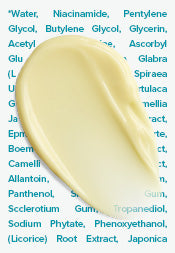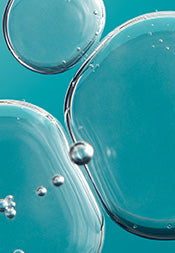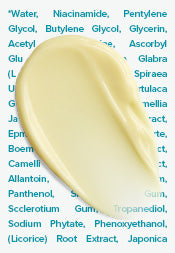Help for Acne on the Hairline and Scalp
Regular breakouts are bad enough, so it hardly seems fair when scalp acne and breakouts along the hairline show up, too. Don’t be discouraged: There are simple tricks and proven solutions to keep scalp pimples and forehead bumps from appearing. We share what’s worked for us based on scientific research, not hype.
Why do I get hairline acne?
Surprise: The hair care products you use can be a sneaky cause of why you’re breaking out on your back, neck, chest, and scalp. Styling products — especially hair pomades and hair waxes — are the biggest culprits of these painful pimples, but moisturizing shampoos and conditioners can be potential contributors of this too.
Ingredients in shampoos and conditioners, such as emollients, quaterniums, acrylates, and wax-like thickening and anti-static agents, are designed to cling to hair, which is great. The problem is they can also cling to the skin, potentially causing clogged pores. Here’s what to do:
- Shampoo and condition your hair first and rinse well, tilting your head back under the shower head. Tilting downward (so the water rushes over your face) can deposit “clingy” hair care ingredients on your skin.
- Follow with your gentle, fragrance-free body wash, paying attention to your neck, upper back, chest, and hairline.
- Use only the amount of conditioner you need. Any excess conditioner doesn’t help your hair or skin. Not sure how much to use? Start with a small amount and see how your hair does.
- When you apply styling products, take care to avoid the skin around your face. Love hairspray? Protect your skin from its pore-clogging holding agents with a clear, plastic face shield available online.
- Avoid putting creams, waxes, or pomades on any hair that touches your face.
- Silicone serums aren’t a problem. Silicone is porous, so it won't suffocate your skin or cause scalp bumps.
How to get rid of forehead acne
You should treat forehead acne the same way that you treat acne on the rest of your face. The exception? If you’re dealing with clogged pores, not with acne, you’ll know the difference. This is because acne results in raised, red bumps (pimples) that can ooze fluid and feel uncomfortable; clogged pores, on the other hand, aren’t red, don’t swell up, and rarely cause discomfort. If it’s only clogged pores (what’s known as non-inflammatory acne), skip step 3 below.
Here’s the step-by-step routine for treating forehead acne:
- Cleanse skin with a water-soluble face wash designed for acne-prone skin.
- Use a leave-on BHA exfoliant to remove dead skin, unclog pores, and help prevent more zits.
- Apply a benzoyl peroxide treatment. Benzoyl peroxide is considered the gold standard ingredient for preventing acne breakouts, clearing pimples you have now, and reducing redness.
How to treat pimples on the scalp
The same hair care products that trigger pimples and clogged pores on the forehead and hairline can cause problems on the scalp, too. But pimples on the scalp are tricky; for example, applying benzoyl peroxide can help, but it can also bleach your hair. A BHA exfoliant can work wonders, but the typical lotion, cream, or gel form isn’t easy to get directly on the scalp.
Here are some tips for dealing with painful pimples on the head and clogged pores that lead to scalp bumps:
- Be sure your shampoo rinses cleanly. Avoid conditioning and “2-in-1” formulas.
- If you use a conditioner, apply it only to the ends of your hair and rinse well.
- Use a cotton swab to apply a liquid anti-acne exfoliant specially formulated for the body. Leave it on your scalp overnight, and shampoo your hair in the morning.
- Don’t apply any creamy, thick, or paste-like styling products near the scalp.
- If you have scalp acne that’s red and swollen, be extra gentle when combing or brushing your hair. A plastic wide-toothed comb works well and is gentler than a standard hairbrush.
- See your dermatologist if your scalp acne doesn’t respond to over-the-counter products.
Does scalp acne cause hair loss?
Many people worry that having hair follicles disrupted by acne will result in hair loss or alopecia. In most cases, the answer is no. There are some rare, severe types of scalp acne that result in hair loss, though with treatment from a dermatologist, the hair can grow back.
Learn more about what causes acne breakouts.
Shop Paula’s Choice cruelty-free hair and body shampoo and conditioner
References for this information:
Drugs in Context, October 2021, ePublication
The Journal of Family Practice, September 2021, page 356
International Journal of Trichology, April 2020, pages 35-37
International Journal of Women’s Dermatology, June 2015, pages 59–75
The Journal of Clinical and Aesthetic Dermatology, July 2014, pages 19–31; and April 2010, pages 24–38












